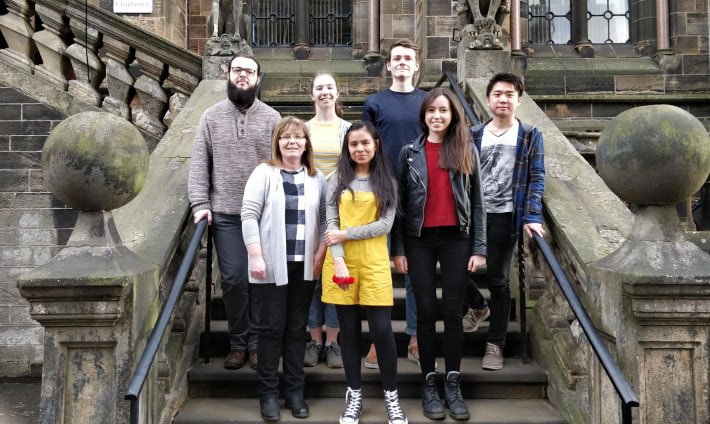Could future VLEs spell the end for screen time? #FutureOfEducation

Currently, many students and staff use a virtual learning environment (VLE), such as Blackboard, Moodle or Canvas to access learning resources and applications, submit and mark assignments, and for quizzes and discussions.
In the first edtech challenge of 2019, Jisc set entrants the task of envisaging the VLE of the future, which can operate without the constraint of a computer, phone or tablet screen, although recognising that some device may be required as an interface.
The winner – VLE of the Future
The winning idea from a University of Glasgow team uses the “memory palace” technique to create an immersive environment that aids learning. The vision is for an interactive, collaborative space for independent learning without constraints of time or location.
The idea is that users immerse themselves in their study space, rather than simply use it as a place to sit. This method promotes physical activity, collaboration and seeks to make the student experience more enjoyable.
The judges chose this idea as it best encapsulates the benefits of learning in an immersive environment, is informed by students ideas and addresses accessibility and inclusion requirements.
Receiving the £1,000 top prize are Dr Mary McVey, a lecturer in the school of Life Sciences, and a team of eight students from the University of Glasgow’s School of Life Sciences.
McVey said that using these methods could offer students struggling with learning disabilities a new chance at learning:
“It could provide them with a solution to aspects of academia that were holding them back, allow them to excel at their courses and get more involved with their class environment, while having fun in the meantime.
“We wanted to use our submission to increase awareness about learning disabilities, how common they are, and emphasize the problems that students at all levels of education struggle with, on an everyday basis.”
Three runners-up will receive a £250 prize. They are:
The Student Body
Mark Shand, from the University of West of England, replaces the VLE interface with a patient simulation dummy, brought to life using technologies such as Bluetooth, sensors and augmented reality to challenge assumptions and requirements about a modern learning environment. The dummy is aimed at nursing students.
Boxi
Leanne Fitton’s idea, Boxi, pulls together emerging technologies to create a learning companion. The student, from Manchester Metropolitan University, wants to change the way in which we think of VLEs using some retro learning technologies such as paper or a whiteboard, as well as newer innovations including chatbots.
Health + Content + Context
Two University of Hull staff members‘ vision of how, through better use of data, learning can be “dripped” seamlessly into students’ schedules. Thomas Tomlinson and Mike Ewen’s idea can assess health and wellbeing considerations through wearables and seamlessly connects to devices in the university, home and community, allowing students to access learning whenever and wherever it suits them – when they are at their most receptive.
A full overview of the winning ideas, along with highlights from further shortlisted ideas, will be available on the edtech launchpad blog.
Screenless VLEs use some of the technologies that are driving the fourth industrial revolution, or Industry 4.0, including mixed reality and artificial intelligence. Education 4.0, Jisc’s response to Industry 4.0, envisages big changes in teaching and learning, such as an increasing appetite for more active forms of learning, which is reflected in the competition’s theme.
James Seaman, account chief technologist at Softcat, was one of the judges for the challenge. He says:
“The winner and most of the ideas submitted have real-world application potential and the ideas that attracted me the most are deliverable and had direct student benefits.
“Any ideas that create a more in-depth and simple student engagement experience and simplify the use of technology really appeal to me. I am heartened to see the forethought and depth of understanding illustrated in the responses.”
The edtech challenge was open to all college and university students and staff with good ideas to share.











Responses